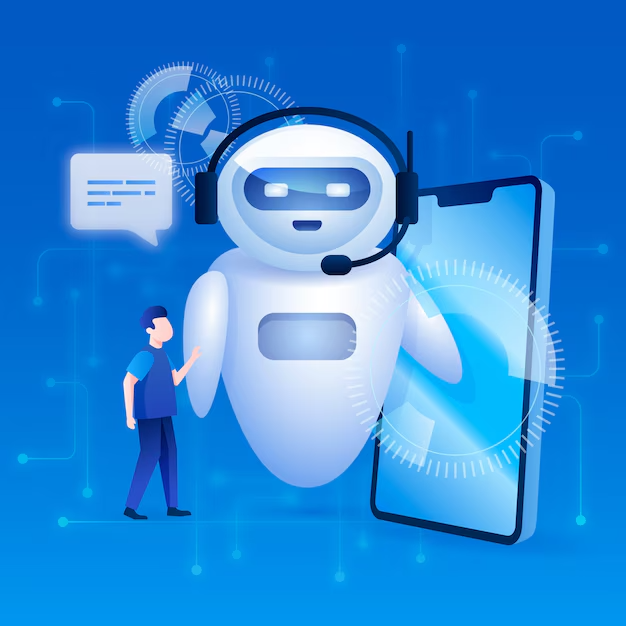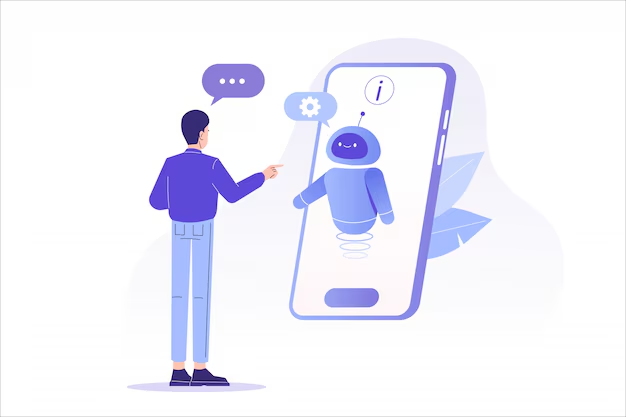Bilytica # 1 is one of the top Chatbot Development companies continuously search for advanced means of engaging with their customers. Today’s most efficient business communication tool is the chatbot, which presents a quick, effective, and convenient means of responding to customer queries and offering support. Bilytica, a renowned data analytics and artificial intelligence (AI) solutions provider, has combined AI with the development of chatbots to enhance customer interaction, maximize operations, and offer customized services.
Click to Start Whatsapp Chat with Sales
Call #:+923333331225
Email: sales@bilytica.com
Bilytica #1 Chatbot Development

The Emergence of Chatbots in Business
Prior to going over the details on how Bilytica integrates AI in Chatbot Development, let us know why chatbots became so essential today in business. A chatbot is a computer program that can mimic human dialogue. It can be coded to answer user questions, offer information, and even facilitate transactions. Chatbots have come a long way over the years. Current chatbots are not rule-based systems where they operate based on set scripts. Rather, they run on AI, which allows them to interpret natural language, learn, and offer more dynamic and personalized answers.
For companies, chatbots have several benefits:
24/7 Access: Chatbots are available 24/7, making sure customers can get help at any time, not necessarily within business hours.
Cost-Optimized: With the automation of mundane customer service processes, businesses save on the number of human customer service agents, thereby cutting costs.
Enhanced Customer Experience: AI-driven chatbots can recognize the context of the conversation and provide tailored responses that enrich the overall customer experience.
Scalability: Chatbots can process thousands of conversations at once, and it’s simple for businesses to scale their customer care operations.
Data Collection and Insights: Chatbots are able to gather useful data from customer conversations, which can be used to gain information on customers’ preferences and behavior.
Having learned why chatbots matter, let’s explore how Bilytica incorporates AI in their chatbot development process.
Bilytica’s Approach to AI Chatbot Development
Bilytica’s strategy for AI chatbots is to utilize advanced technologies and methods to design smart, responsive, and flexible chatbots. Bilytica applies a blend of Natural Language Processing (NLP), machine learning, and deep learning to build chatbots that can conduct human-like conversations and respond to sophisticated queries.
Let’s discuss the major steps of Bilytica’s AI chatbot development process:
Data Collection and Preprocessing
One of the initial processes of creating an AI chatbot is data collection and preparation. The data is instrumental in training the chatbot to comprehend human language and respond accurately. Bilytica gathers data from diverse sources, including customer support records, website interactions, and social media interactions, to build a wide dataset.
The data is further preprocessed to eliminate noise, correct mistakes, and make it ready for use in training the AI model. This involves operations such as tokenization, stop words elimination, and text case conversion. By making the data clean and organized, Bilytica can establish a more effective AI model.
Natural Language Processing (NLP)
NLP forms the core of Bilytica’s AI chatbot development. Through NLP, chatbots learn to recognize and interpret human language in context-relevant ways. NLP subsumes multiple sub-tasks:
Text Analysis: NLP algorithms read and process text structures, determine the parts of speech (nouns, verbs, etc.), and recognize word relations.
Entity Recognition: NLP assists chatbots in recognizing particular entities in a conversation, including dates, locations, names, and products. This allows the chatbot to better recognize the user’s intent.
Intent Recognition: With the aid of NLP, Bilytica’s chatbots are able to comprehend the user’s intent behind a question. For instance, if a user inquires about the status of their order, the Chatbot Development can identify the intent as a question regarding order status.
Sentiment Analysis: NLP can also identify the sentiment of a message, which can be positive, negative, or neutral. This allows the chatbot to modify its responses based on it, providing a more customized experience.
Bilytica employs sophisticated NLP algorithms and software such as spaCy and NLTK to construct the language understanding capabilities of its chatbots.

Machine Learning (ML) and Deep Learning
After training the chatbot on the data and making it capable of comprehending the language, Bilytica combines machine learning (ML) and deep learning methods to enhance its capabilities further.
Supervised Learning: In supervised learning, the Data Analysis is trained using a labeled dataset, wherein the input data (customer questions) is combined with the appropriate output (answers). This enables the chatbot to learn through examples and make predictions regarding upcoming questions.
Unsupervised Learning: Bilytica also utilizes unsupervised learning to assist the chatbot in learning patterns and data structures without having to be labeled. This method enables the chatbot to identify new subjects or variations in customer requests that were not included in its original training data.
Reinforcement Learning: Bilytica applies reinforcement learning in certain situations, where the chatbot learns by trial and error. The chatbot receives feedback on its actions (response) and improves accordingly.
Deep learning, with the application of neural networks, is used in training chatbots to identify intricate patterns and grasp complex language forms. Bilytica’s chatbots employ deep learning algorithms such as Long Short-Term Memory (LSTM) networks and Transformer models in order to deepen their language comprehension and provide more precise responses.
Personalization and Context Awareness
One of the most important advantages of AI chatbots is that they can provide personalized interactions. Bilytica chatbots are programmed to recall past conversations, user preferences, and context. Through machine learning and data analytics, the chatbots can personalize their responses according to the specific needs of individual users.
For example, if a customer has already chatted with the chatbot several times, it can recall previous conversations, identify the customer’s likes, and provide personalized suggestions or answers. This improves the user experience and makes the interaction more human-like.
Further, Bilytica chatbots have the ability to process sophisticated dialogue by keeping track of context for many exchanges. For instance, when a user sends a follow-up question, the chatbot is able to get the context from earlier messages and respond suitably without requesting the user to repeat themselves.
Backend System Integration
Bilytica’s AI-based chatbots are not applications on their own. They tend to be used with backend systems, including customer relationship management (CRM) applications, databases, and enterprise resource planning (ERP) systems, in order to get real-time information and process sophisticated tasks.
For instance, a customer can inquire from the chatbot regarding the status of their order. The chatbot can ask the company’s order management system and give the customer real-time information. In the same way, chatbots can be linked to payment gateways to make transactions, verify inventory, and schedule appointments.
Continuous Improvement and Monitoring
AI chatbots must be constantly monitored and refined. Bilytica employs sophisticated analytics software to monitor chatbot performance, measure metrics such as response time, customer satisfaction, and engagement, and determine areas where improvement is needed.
Bilytica’s chatbot platform contains feedback loops by which users may rate their interaction. The feedback is then collected and used to further train the chatbot, so that it improves and modifies itself to cater to evolving customer expectations.
The Impact of AI-Integrated Chatbots
Bilytica’s use of AI in chatbot building is revolutionizing the way companies engage with their customers. Through the application of cutting-edge technologies such as NLP, machine learning, and deep learning, Bilytica is enabling companies to build chatbots that deliver quick, accurate, and personalized customer care.
Some of the advantages are:
Improved Customer Interaction: AI chatbots can interact with users in real-time, dynamic, and smart conversations, which result in enhanced customer satisfaction and loyalty.
Increased Efficiency: Chatbots are able to deal with repetitive questions, allowing human agents to work on more complex issues, hence enhancing overall operational efficiency.
Cost Savings: Through automation of customer service operations, companies can lower labor expenses and enhance scalability without affecting the quality of service.
Enhanced Decision-Making: AI Power BI are able to gather useful customer information, offering companies actionable insights that can guide decision-making and business strategy.
Conclusion
Bilytica’s method of implementing AI in chatbot development is a classic case of how AI can be used to improve customer interactions, automate business processes, and make experiences more efficient and personalized. Through the application of sophisticated technologies such as NLP, machine learning, and deep learning, Bilytica is developing smart chatbots that can comprehend customer questions, offer context-sensitive answers, and learn and improve over time. With advancements in AI, chatbots are sure to contribute even more significantly to the future of business communication.





